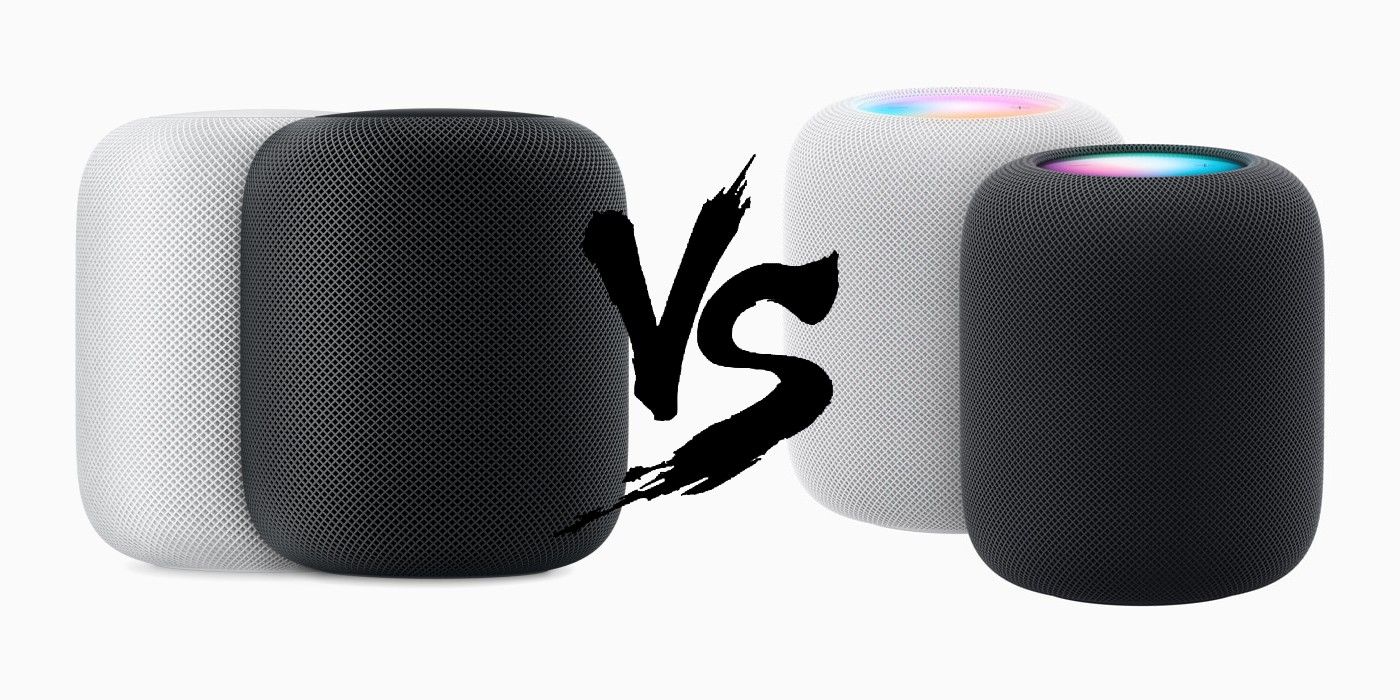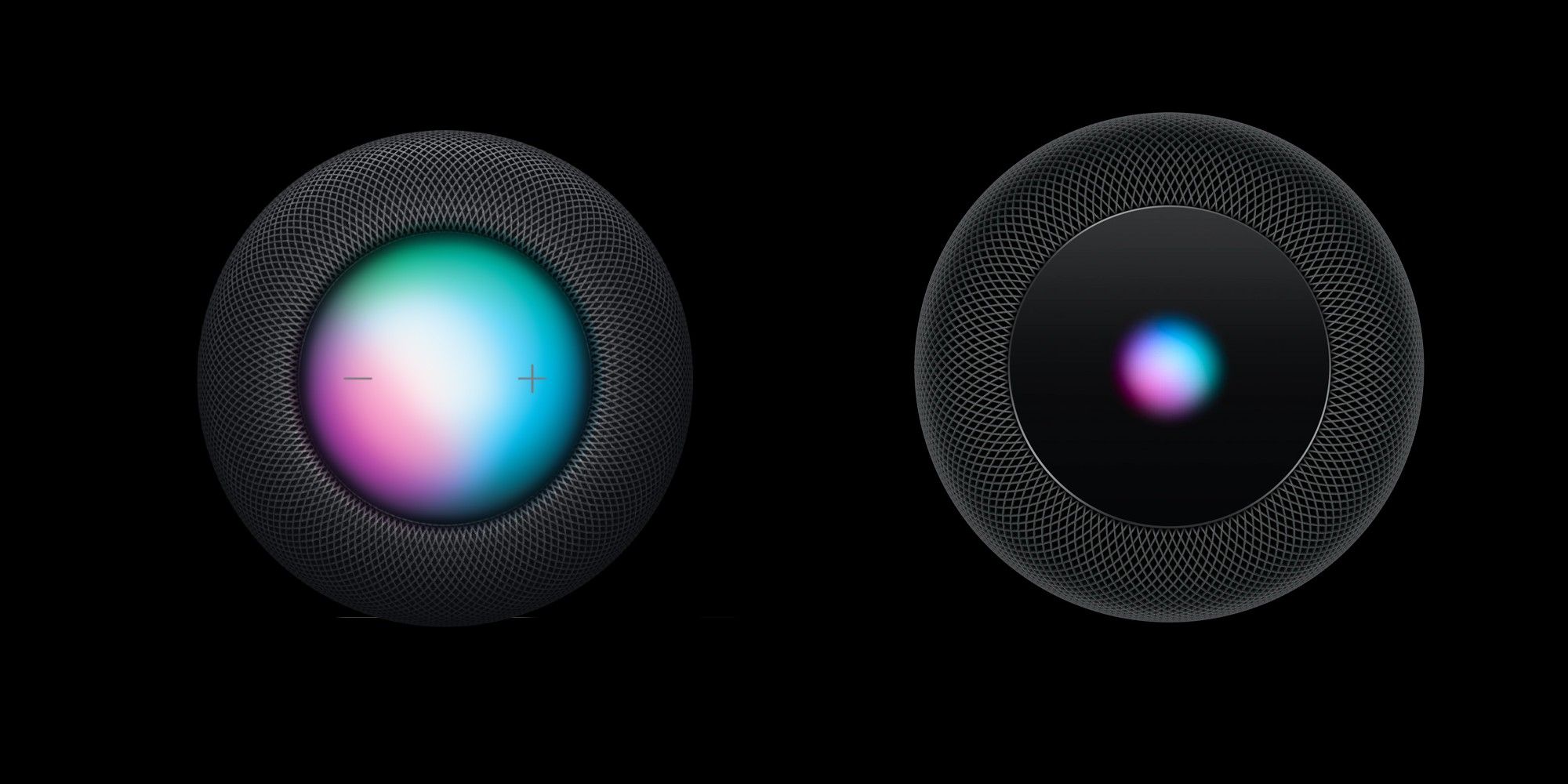Apple has continued its string of surprise announcements for 2023 with the launch of the HomePod (2nd-generation), but is it worth upgrading to for owners of the first-generation HomePod? The HomePod hit store shelves in 2018, although it was announced in November 2017. While it offered impressive audio performance, its smart features left a lot to be desired. The HomePod was eventually discontinued in 2021, but before then, Apple announced a cheaper smart speaker — the $99 HomePod Mini — which was the world's best-selling smart speaker in Q1 2022.
The HomePod (2nd-gen) and HomePod (1st-gen) have the same cylindrical design and are both available in two colors: White and Midnight for the HomePod 2 and White and Space Gray for the first-gen model. However, that isn't to say there are no physical differences. For starters, the backlit touch surface on top of the smart speaker is recessed on the HomePod 2 and the LEDs illuminate the entire area and not just the middle, as is the case with the 1st-gen HomePod. The new HomePod also has a woven power cable that matches the color of the speaker, and its spec sheet reveals it is lighter and shorter, too.
The 2nd-Gen HomePod Has Fewer Speakers & Microphones
The differences between the two HomePods continue on the inside. For starters, the new HomePod has a UWB (Ultra Wideband chip) that allows users to hand off playback and even calls from their supported iPhones to the HomePod. There is also a more powerful Apple S7 chip, the same one used in the Apple Watch Series 7, which replaces the 2014 A8 chip from the previous generation. The new chip allows for more advanced computational audio and a better listening experience. Users should also notice faster response times when they issue a voice command.
What is interesting is that the 2nd-gen HomePod has fewer speakers and microphones than its predecessors. While it still has a high-excursion woofer, there are now five beamforming tweeters instead of seven. There are also four far-field microphones instead of six. Apple has also added an internal bass-EQ mic. The new HomePod also has room-sensing technology, and using sound reflections from nearby surfaces, it can tell if it is placed against a wall or freestanding and then adjust the sound accordingly. The HomePod (1st-gen) uses spatial awareness to determine its location.
Another new addition is a built-in sensor that now allows the HomePod (2nd-generation) to measure indoor temperature and humidity. This sensor is also present inside the HomePod Mini but has been sitting dormant since its launch a few years ago. Apple will roll out a software update to both speakers that will put the sensor to use. When it arrives, owners will be able to create an automation such as adjusting the thermostat or turning on the fan when the room is at a certain temperature.
The HomePod 2nd-gen also has support for Matter, so it can control Matter-enabled devices. It can also work as a home hub for controlling smart accessories even when away from home. The new HomePod's Sound Recognition feature also allows it to listen for smoke and carbon monoxide alarms, and then send notifications to a user's iPhone, iPad, or Apple Watch.
Like the original HomePod, users can pair two HomePods together for a stereo experience — but they must be of the same generation. There is also support for multi-room audio and the Intercom feature that's available on the HomePod (1st-gen) and HomePod Mini. However, device compatibility has changed for the 2nd-gen HomePod. The original HomePod supports the iPhone 5s or later, while the new HomePod is compatible with the iPhone SE (2nd generation) and later, or the iPhone 8 or later. A combination of its more advanced chip, new sensors, and support for Matter, makes the HomePod (2nd-gen) a worthy upgrade for Apple fans.
Source: Apple


